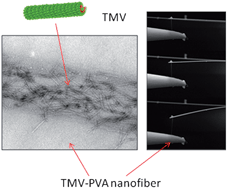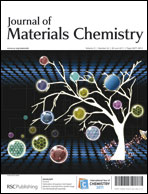Electrospinning fabrication, structural and mechanical characterization of rod-like virus-based composite nanofibers†
Abstract
Tobacco mosaic virus (TMV) was electrospun with polyvinyl alcohol (PVA) into continuous TMV–PVA composite nanofibers to form a biodegradable nonwoven fibrous mat as an extracellular matrix (ECM) mimetic. Morphological characterizations by


 Please wait while we load your content...
Please wait while we load your content...